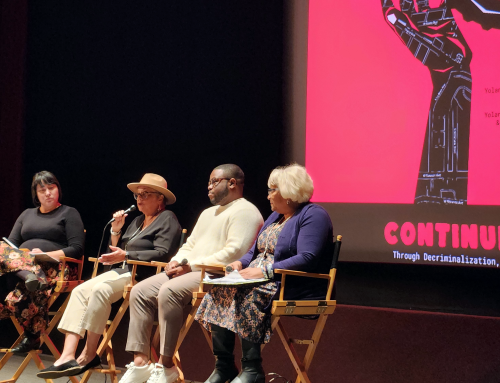This October, Dr. Yodan Rofe visited UCLA to present his work developing a model for pedestrian activity in Israeli cities. Speaking to a full audience, he discussed the state of the practice in pedestrian modeling and the goals and results of his work in Israel. Dr. Rofe cited the work of Jane Jacobs, Kevin Lynch, and Jan Gehl as theoretical predecessors. He defined and explained the “spatial configuration approach” to travel modeling, which draws on the work of Hillier and Hanson, who pioneered this concept in 1989 with their book The Social Logic of Space. This approach entails formalizing the street network in a city as a set of links and nodes, and assigning values to these links and nodes based upon various measures of their centrality and connectedness in the network.
Dr. Rofe’s work, funded by a national authority in Israel, aims to identify the variables explaining pedestrian volumes in Israeli cities, with a particular emphasis on understanding the movements of children and elderly people. Dr. Rofe’s team conducted pedestrian counts on a representative sample of streets, and then performed a regression analysis to explain pedestrian volumes. His team constructed both city-scale models and neighborhood-scale models, and found that the neighborhood-scale models had greater explanatory power. His team modeled total pedestrian volumes, as well as volumes of children and elderly walking, and found more success modeling total numbers of pedestrians.
Dr. Rofe finds that the models are moderately successful: they can predict pedestrian movements relatively well in some types of cities and neighborhoods (R^2 > 80%), and much less well in other cases, such as when focusing only on children or the elderly, or when predicting movements in outer neighborhoods (e.g. not in city centers). In addition, the models did not perform well when they were validated on cities and neighborhoods other than those used to construct the model. A couple of possibilities exist in terms of the prognosis for further research. It’s possible that more extensive data, observations, and model development may need to be done to create a unified model for pedestrian movements. It may also be the case that variability among neighborhoods in Israeli cities is too large to be modeled with a single unified model.
Dr. Rofe’s talk was jointly sponsored by the Lewis Center for Regional Policy Studies, the Institute of Transportation Studies, and the Younes & Soraya Nazarian Center for Israel Studies at UCLA.





